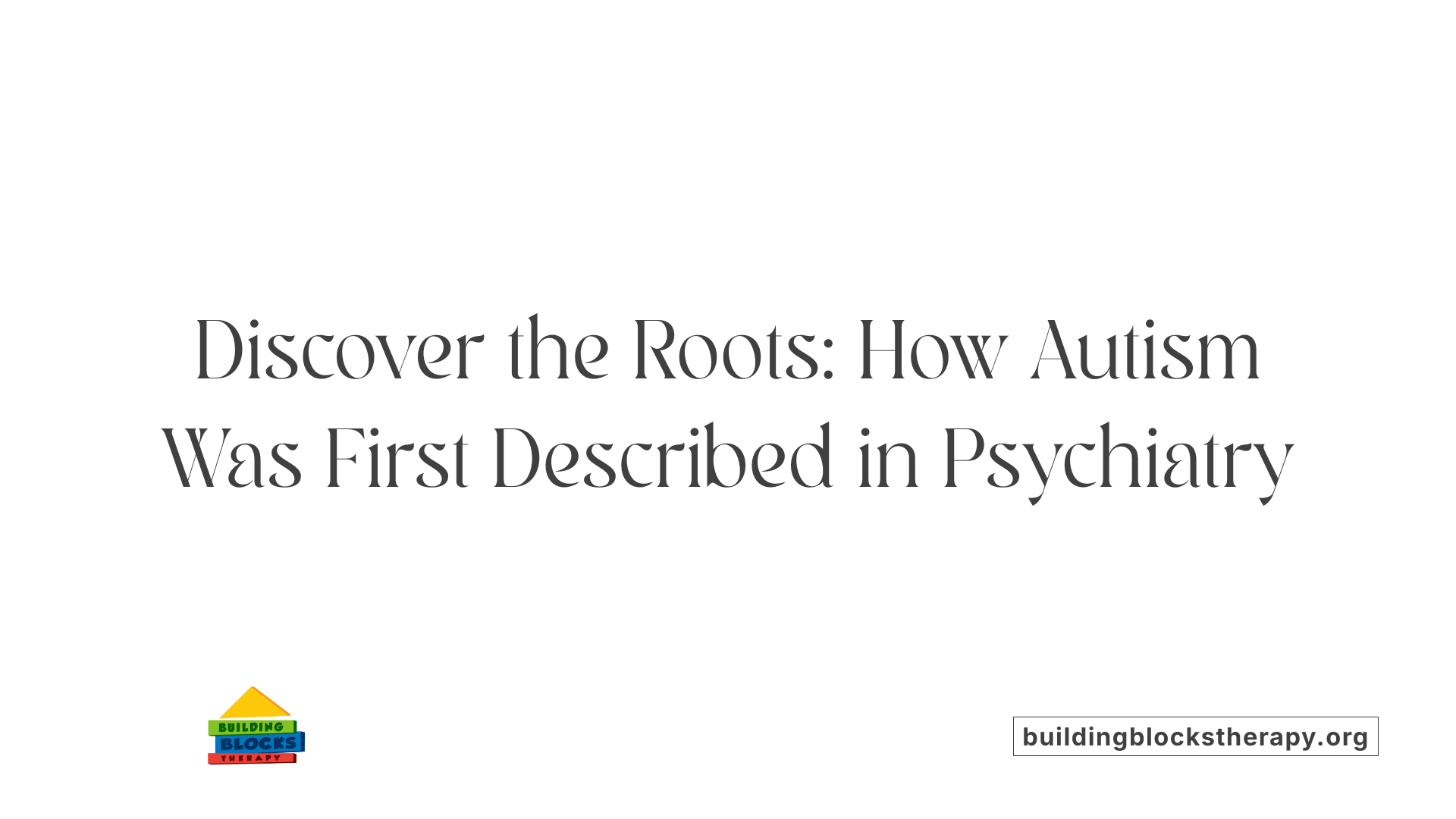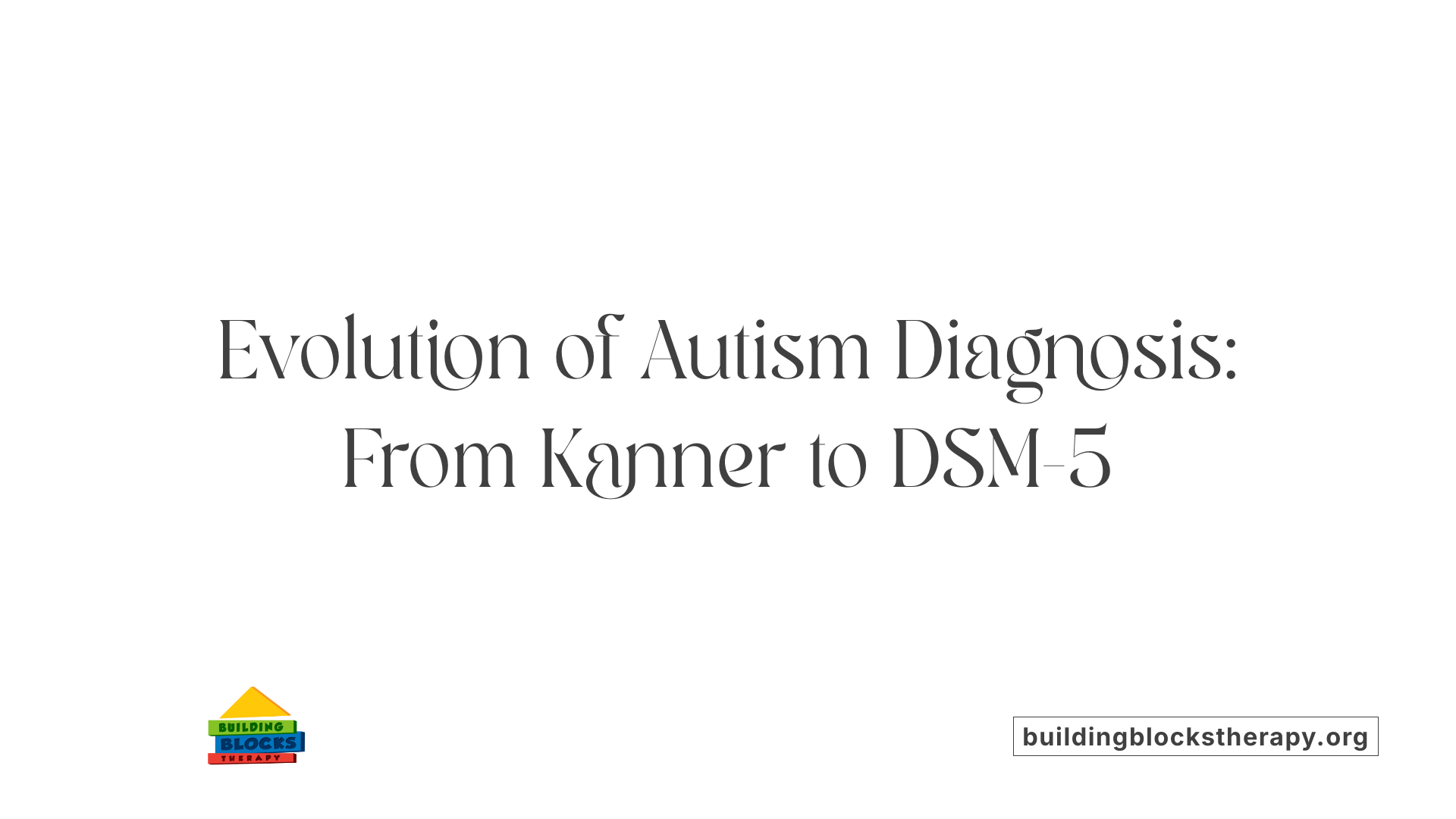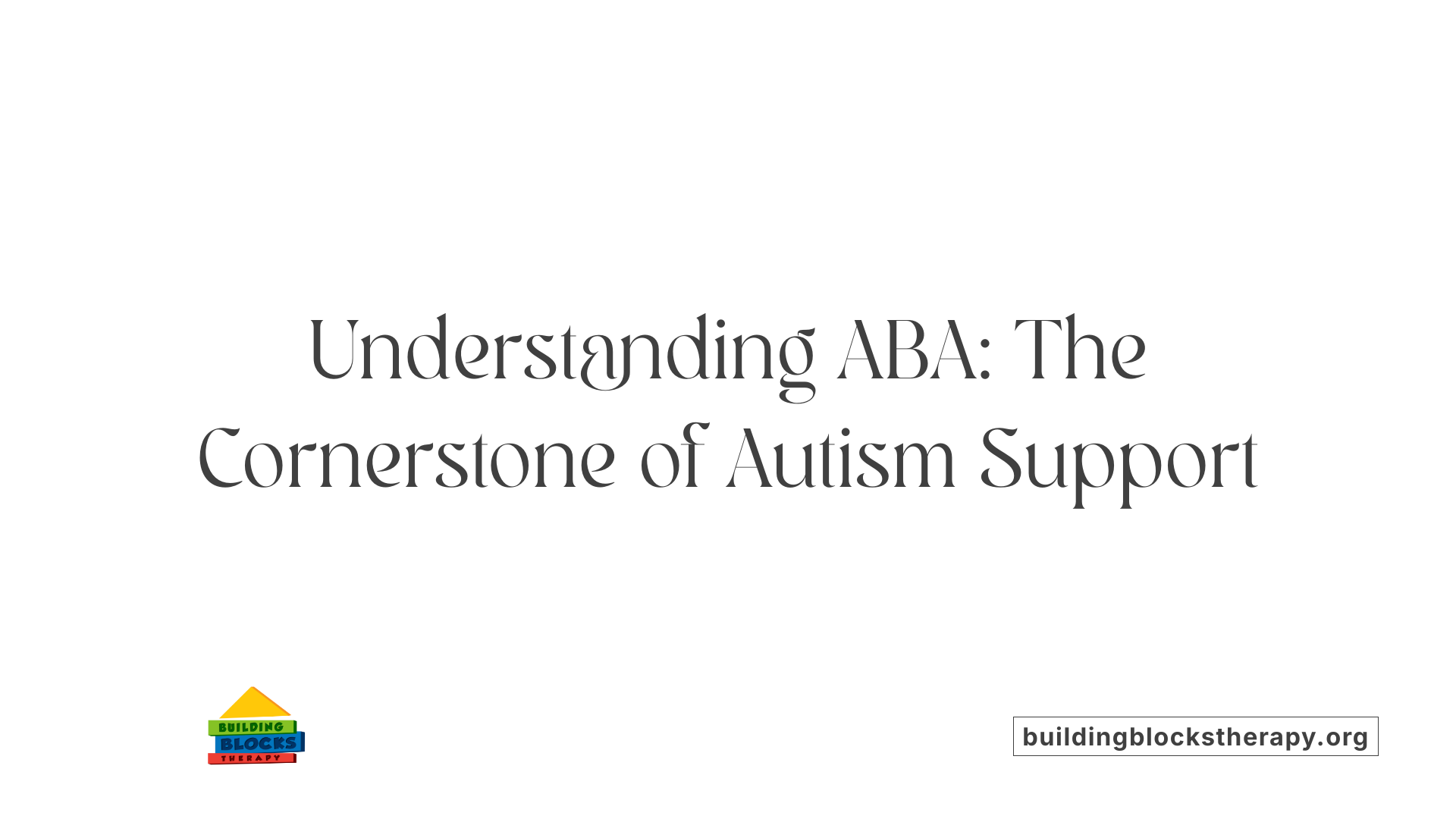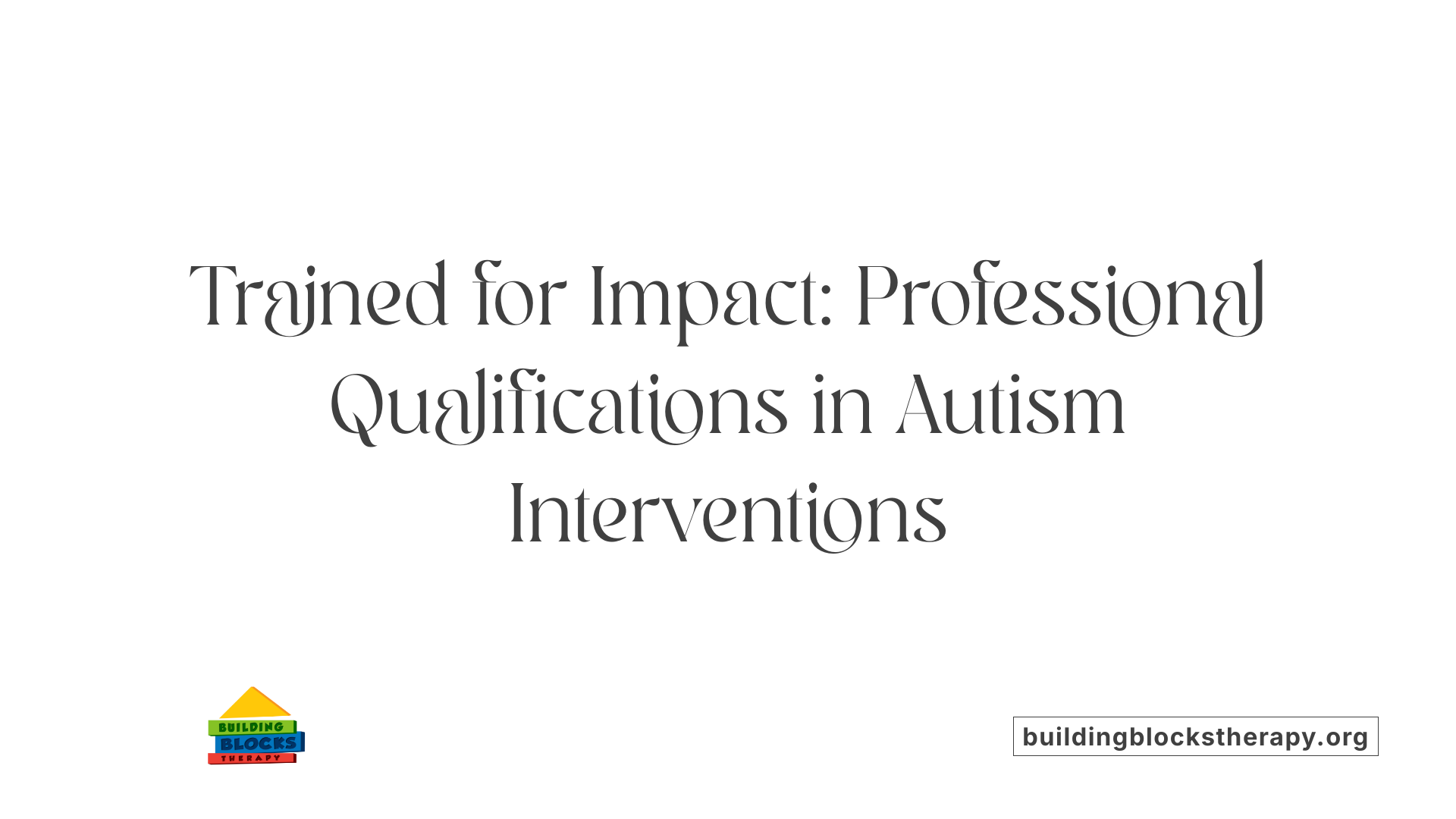History & Timeline Of Autism
Tracing a Century of Understanding: The Evolution of Autism From Early Descriptions to Modern Diagnosis

From Early Observations to a Defined Diagnosis
Autism has journeyed from obscure clinical observations in the early 20th century to a well-recognized spectrum disorder influencing research, treatment, and public awareness worldwide. This article navigates the rich history and timeline of autism, exploring pivotal milestones, evolving diagnostic frameworks, and the development of behavioral therapies that support individuals on the spectrum today.
Origins and Early Descriptions of Autism

How did the concept of autism first emerge in psychiatry?
The term "autism" was first introduced in 1911 by Swiss psychiatrist Paul Eugen Bleuler. He used the word to describe a detachment from reality observed primarily in schizophrenia, without the specific developmental context seen later.
In 1926, Soviet psychiatrist Grunya Sukhareva provided one of the earliest detailed descriptions of children showing what we would now recognize as autistic traits. These included social withdrawal, repetitive behaviors, preferences for solitude, and sensory sensitivities—observations that closely mirror today's diagnostic criteria.
Leo Kanner's 1943 landmark paper formally introduced "early infantile autism" as a distinct condition. He described 11 children exhibiting severe social interaction difficulties, language delays, repetitive behavior, and a strong insistence on sameness. Kanner’s work laid the foundation for understanding autism as a developmental disorder, distinct from schizophrenia.
Almost simultaneously, in 1944, Hans Asperger studied children who shared certain social challenges but often had average or above-average verbal abilities. His observations helped define what later became known as Asperger syndrome, now recognized as part of the broader autism spectrum.
These early descriptions collectively shaped the emerging concept of autism as a neurodevelopmental condition characterized by social impairments and restricted behaviors, setting the stage for decades of research and refinement in diagnostic approaches.
Development of Diagnostic Criteria and Autism Spectrum Concept

How did diagnostic criteria for autism evolve over time?
Autism was first described by Leo Kanner in 1943 as "early infantile autism," highlighting characteristics like social withdrawal and insistence on sameness. However, it wasn't until 1980 that autism was officially recognized as a distinct diagnosis in the DSM-III, labeled "infantile autism" under the category of Pervasive Developmental Disorders. This marked a key shift, emphasizing core features such as deficits in social responsiveness and stereotyped behaviors.
In the 1970s, Lorna Wing introduced a broader perspective by proposing the concept of autism spectrum disorders (ASD). She emphasized the "triad of impairments": difficulties in social interaction, communication challenges, and restricted imagination. This concept expanded the understanding of autism beyond Kanner's initial narrow definition, recognizing a range of autistic conditions.
Prior to these developments, autism was often confused with childhood schizophrenia. Research during the 1970s and 80s helped distinguish autism as a biologically based neurodevelopmental disorder, separate from psychiatric conditions like schizophrenia.
The diagnostic approach evolved further with DSM-IV and ultimately DSM-5 in 2013. DSM-5 replaced multiple separate diagnoses—such as autistic disorder, Asperger's syndrome, and pervasive developmental disorder—not otherwise specified (PDD-NOS)—with a single diagnosis: Autism Spectrum Disorder. This model recognized autism as a continuum with varying levels of severity and included specifiers for co-occurring conditions to better capture its heterogeneity.
Overall, this progression reflects a shift from viewing autism as a categorical disorder with fixed subtypes to understanding it as a spectrum that varies in presentation and severity. The emphasis moved from isolated symptoms to a dimensional, nuanced approach that accounts for diverse individual profiles within ASD.
Autism Prevalence and Epidemiological Studies Through the Decades

How has the understanding of autism prevalence changed over time?
Epidemiological research has progressively reshaped our insights into autism prevalence. In 1966, Victor Lotter conducted one of the earliest significant studies, reporting an autism-related prevalence of about 4.5 per 10,000 children in Middlesex. A decade later, Wing and Gould expanded on this by identifying a prevalence of nearly 5 per 10,000 among children with lower IQs displaying autistic features, and an overall prevalence of approximately 20 per 10,000 when including a broader range of social and communication impairments.
What variability and trends have studies worldwide uncovered?
Subsequent research in the 2000s and 2010s in various parts of the world revealed notable increases and variability in autism prevalence. For example, in 2008, the U.S. Centers for Disease Control and Prevention (CDC) estimated autism affected 1 in 88 children, which updated to 1 in 50 by 2011-2012. Similar studies in Europe and Asia reported rates ranging from around 11.5 per 1,000 in Stockholm to 2.64% in South Korea. Additionally, adult psychiatric surveys in England identified approximately 1% to 1.1% of adults as autistic.
What factors drive differences in autism prevalence?
The increased prevalence estimates and their geographic variability are closely linked to evolving diagnostic criteria, including recognition of the broader autism spectrum. Enhanced public and professional awareness, better screening, and improved access to services have also played crucial roles. Variations in socioeconomic status, ethnicity, and cultural perceptions influence both the timing of diagnosis and prevalence reporting, contributing to the differences observed across populations and time periods.
Applied Behavior Analysis (ABA): Origins and Its Role in Autism Support

What is Applied Behavior Analysis (ABA) therapy and how is it used to support individuals with autism?
Applied Behavior Analysis (ABA) therapy, developed in the 1960s by Ole Ivar Lovaas, is a scientifically validated approach designed to support individuals with autism. ABA employs learning principles to encourage positive behaviors such as effective communication and social interaction while aiming to reduce behaviors that interfere with learning and daily functioning.
Principles and methods of ABA
ABA relies heavily on techniques like positive reinforcement, where desirable behaviors are rewarded to increase their occurrence. A common method used within ABA is Discrete Trial Training (DTT), which breaks skills into small, manageable steps taught systematically. Throughout therapy, progress is closely monitored and data-driven adjustments are made to optimize outcomes.
Individualized therapy programs and settings
Each ABA program is tailored to the unique strengths and needs of the individual, crafted after comprehensive assessment by trained professionals. Therapy can be delivered in various settings including the home, school, or clinical environments, ensuring flexibility and relevance to daily life. Often, these programs require consistent and intensive engagement over months or years to achieve meaningful improvements.
Through ABA, many individuals on the autism spectrum achieve gains in cognitive, language, and social domains, making it a cornerstone in autism intervention strategies worldwide.
Other Behavioral Therapies Beyond ABA

What types of behavioral therapies are commonly used to support individuals with autism, other than ABA?
Beyond Applied Behavioral Analysis (ABA), several other behavioral therapies have proven effective in supporting individuals with autism.
Relationship Development Intervention (RDI) focuses on improving social and psychological thinking skills. It actively involves parents in the therapy process, helping children develop stronger social relationships and emotional understanding.
Pivotal Response Treatment (PRT) utilizes play-based strategies to boost motivation and encourage self-initiated communication. By targeting pivotal areas such as motivation, responsiveness, and self-management, PRT aims to produce widespread improvements in behavior.
Early Start Denver Model (ESDM) is designed for young children and focuses on social, emotional, and cognitive development within naturalistic settings. This early intervention approach combines developmental and behavioral techniques to foster skill acquisition during critical growth periods.
Parent Training and Involvement programs empower caregivers by teaching effective intervention techniques. This approach enhances consistency in therapy and promotes skill generalization across various environments.
Together, these therapies complement ABA by emphasizing communication, reducing challenging behaviors, and supporting everyday functioning tailored to individual needs.
Professional Training and Qualifications in Autism Behavioral Interventions

What qualifications and training do professionals providing autism behavioral therapies typically have?
Professionals delivering autism behavioral therapies, particularly Applied Behavior Analysis (ABA), often hold certifications such as Board Certified Behavior Analyst (BCBA) or Board Certified Assistant Behavior Analyst (BCaBA). These credentials require graduate-level education, completion of supervised fieldwork hours, and successful passage of rigorous certification exams administered by the Behavior Analyst Certification Board (BACB).
Educational and supervised experience requirements
Candidates usually possess degrees in behavior analysis, psychology, education, or related fields. In addition to academic study, they complete supervised practical experience to develop their skills in assessing and intervening in autism-related behaviors. Licensure and certification requirements can vary by region, often including ongoing professional development to maintain credentials.
Skills and expertise in behavioral assessment and intervention
Certified practitioners are trained extensively in behavioral assessment tools and data-based methods. They employ techniques such as positive reinforcement and behavior modification strategies to tailor effective treatment plans. Their expertise encompasses understanding the unique needs of each individual with autism, designing interventions, monitoring progress, and adjusting strategies to support developmental and daily living skills effectively.
The Critical Role of Families in Autism Behavioral Therapy Outcomes

Family involvement in therapy implementation
Families play a pivotal role in the effectiveness of autism behavioral therapy programs. Their deep understanding of the child's unique behavior patterns, preferences, and daily routines allows therapists to tailor interventions that are meaningful and relevant. By learning and applying therapeutic techniques at home, families ensure that interventions are consistently reinforced, extending the benefits of therapy beyond clinical settings.
Impact on skill generalization and consistency
Consistent family participation supports the generalization of skills across different environments. When caregivers embed therapeutic strategies into daily activities, children with autism are more likely to retain and apply newly acquired skills in real-life situations. This ongoing reinforcement creates a stable and supportive environment that enhances developmental progress.
Influence on therapy success and advocacy
Research shows that families actively engaged in therapy contribute to better outcomes and reduced caregiver stress. Their involvement also promotes personalized treatment plans that respect family values and routines. Beyond therapy, families have been central to autism advocacy, helping to shape policies and increase awareness. Their voice strengthens support systems and resources for individuals on the autism spectrum.
| Aspect | Description | Benefits |
|---|---|---|
| Family involvement | Active participation in therapy learning and practice | Enhances treatment consistency and relevance |
| Skill generalization | Embedding skills in everyday activities | Improves retention and real-world application |
| Advocacy | Promoting autism awareness and services | Influences policy and expands support networks |
Long-Term Impact of Behavioral Therapies on Development and Quality of Life

Benefits of Early Intervention
Behavioral therapies, especially when initiated early, play a significant role in enhancing the developmental outcomes for individuals with autism. Starting interventions such as Applied Behavioral Analysis (ABA) around the age of three is associated with improved trajectories in language acquisition, cognitive skills, and social interactions. Early intervention harnesses crucial periods of brain plasticity, allowing children to develop essential adaptive behaviors that promote independence.
Improvements in Communication and Independence
Therapeutic approaches tailored to individual needs, including structured behavioral programs and communication-focused strategies, contribute to noticeable advancements in communication abilities and daily living skills. These improvements enable many individuals with autism to engage more effectively within their communities and achieve greater autonomy. Consistent therapy helps foster skills in social responsiveness and reduces certain repetitive behaviors, enhancing both personal and social quality of life.
Ongoing Challenges and Support Needs
Despite the successes of behavioral therapies, autism remains a lifelong condition that requires ongoing support. Challenges in social integration, employment, and managing co-occurring conditions such as anxiety persist into adulthood. Continued community-based supports, inclusive educational environments, and understanding family contexts are vital to maintaining progress. Outcomes vary according to factors including intellectual functioning, timing of diagnosis, and therapeutic consistency.
Behavioral therapies form a foundational element of autism support and offer substantial benefits that improve long-term quality of life, even as individuals continue to navigate the complexities of the spectrum.
Reflecting on Progress and Future Directions in Autism Understanding and Support
The history and timeline of autism reveal a remarkable transformation from early clinical descriptions to complex diagnostic categorization and a spectrum of behavioral therapies tailored to individual needs. Advances in research, epidemiology, and intervention underscore the importance of nuanced, evidence-based approaches that recognize autism’s diversity. Family involvement remains central to effective therapy, alongside highly trained professionals employing a range of behavioral treatments. As science continues to uncover genetic and neurodevelopmental underpinnings, the future promises more personalized, inclusive, and supportive strategies. Understanding this progression offers valuable context for appreciating contemporary autism care and the ongoing quest to improve quality of life for individuals with autism and their families.





